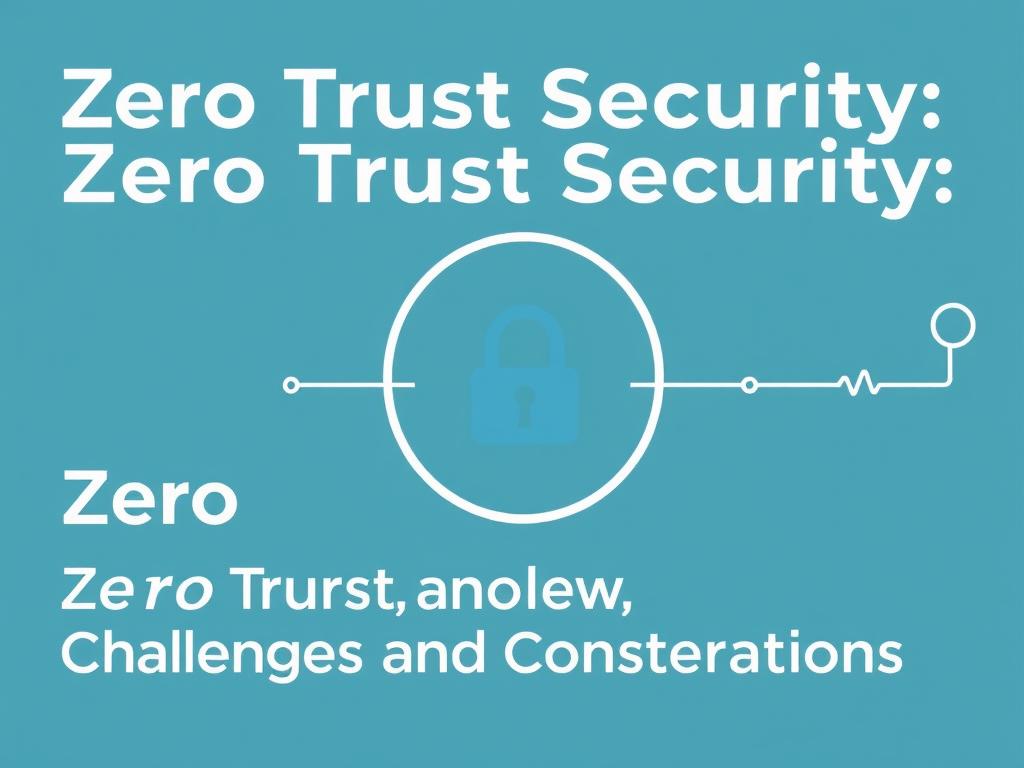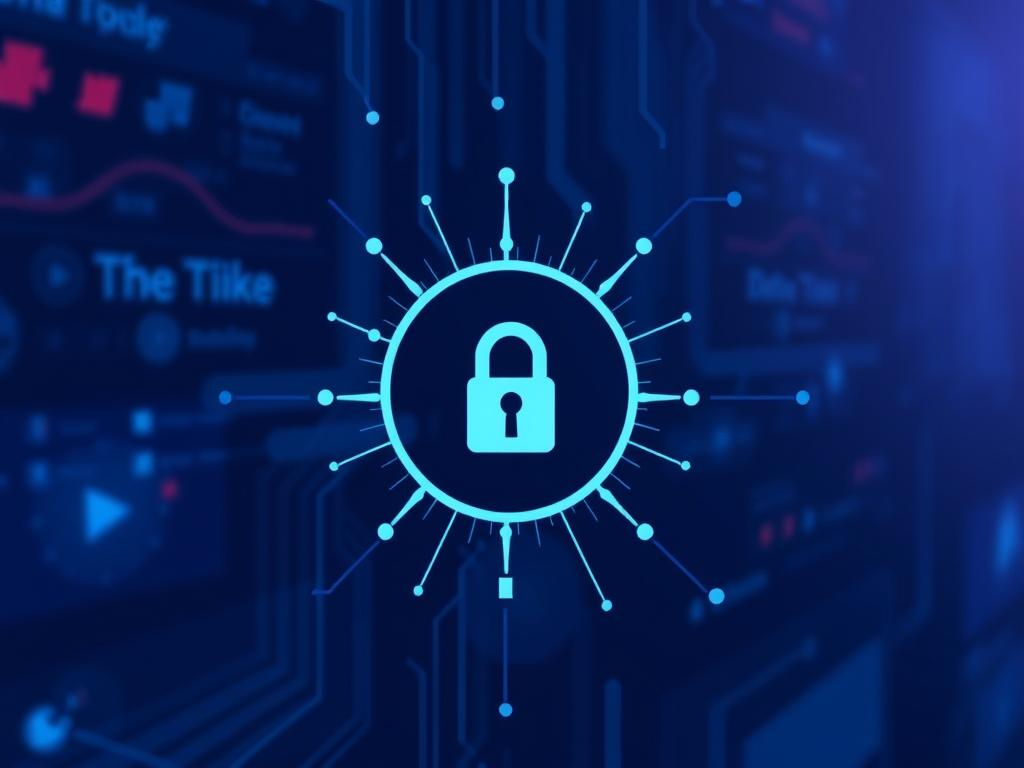In today’s digital landscape, where cyber threats are continually evolving and becoming more sophisticated, traditional security models are no longer enough. Enter Zero Trust Security—a revolutionary approach designed to protect data and systems by assuming that no user or device is inherently trustworthy, regardless of their location inside or outside the network. Instead of the old “trust but verify” mindset, Zero Trust Security demands “never trust, always verify.” This shift dramatically transforms how organizations safeguard their sensitive information and maintain control over access in an increasingly complex environment.
What is Zero Trust Security?
Zero Trust Security is a cybersecurity strategy built around the concept that organizations should not automatically trust anything inside or outside their perimeters. Every request for access to an organization’s resources is verified before permission is granted. This approach closes the gaps left by traditional security models that rely heavily on perimeter defenses like firewalls and VPNs. Zero Trust assumes breaches can occur anytime and anywhere, so it focuses on rigorous identity verification, device authentication, and continuous monitoring.
This model requires strict identity control for all users and devices accessing corporate data and resources. The goal is to minimize risks by reducing the attack surface and limiting lateral movement—where attackers move inside a network after a breach. Zero Trust Security frameworks implement policies such as least privilege access and micro-segmentation, so a compromised user or device cannot jeopardize the entire system.
Why Zero Trust Is Becoming Essential
In the era of cloud computing, remote work, and mobile devices, the traditional “castle-and-moat” approach to security has become obsolete. Users connect to company networks from various locations and devices, making it impossible to distinguish trusted insiders from potential threats based on network location alone. Moreover, cyberattacks are no longer just about breaking through the external firewall; attackers often exploit user credentials or unsecured devices already inside the network perimeter.
Consider these trends driving the adoption of Zero Trust Security:
- Increase in Remote Work: Employees working from home or on the go require access outside the secured corporate network.
- Cloud Migration: Data and applications hosted on cloud platforms create new access points that traditional models struggle to protect.
- Advanced Threats: Cyber criminals are using sophisticated tactics like phishing, ransomware, and insider threats that bypass perimeter defenses.
- Regulatory Pressure: Compliance requirements such as GDPR and HIPAA push organizations to strengthen data protection and identity verification.
By adopting Zero Trust Security, organizations can address these challenges head-on and protect their data more effectively, regardless of changing workforce dynamics or technology environments.
Core Principles of Zero Trust Security
Zero Trust Security isn’t a single tool but a strategic framework composed of several core principles that organizations must implement to strengthen data protection. Here are the foundational pillars of Zero Trust:
| Principle | Description |
|---|---|
| Verify Explicitly | Always authenticate and authorize based on all available data points like user identity, device health, location, and behavior before granting access. |
| Use Least Privilege Access | Grant users and devices only the minimal access necessary to perform their tasks, reducing potential damage from compromised accounts. |
| Assume Breach | Operate with the premise that your network has already been compromised, which drives the need for continuous monitoring and segmentation. |
| Micro-Segmentation | Divide your network into small zones to restrict lateral movement by attackers if a breach occurs, isolating sensitive resources. |
| Continuous Monitoring and Validation | Implement ongoing inspection and validation of user activity to detect suspicious behaviors and act immediately. |
When these principles are properly enforced, organizations can create a defensive environment where trust is never assumed but always earned for every individual and device attempting to access critical data.
Implementing Zero Trust Security: Key Steps
Transitioning to a Zero Trust Security model requires careful planning and execution. Here is a straightforward roadmap that organizations can follow:
- Identify Your Protect Surface: Determine the critical digital assets such as sensitive data, applications, services, and important infrastructure.
- Map the Transaction Flows: Understand how data flows between users, devices, and applications to identify potential vulnerabilities.
- Build Micro-Perimeters: Use network segmentation to isolate protect surfaces, limiting access to only authorized users.
- Implement Strong Identity Controls: Employ multi-factor authentication (MFA), role-based access control (RBAC), and device posture assessments.
- Deploy Continuous Monitoring: Use analytics, logging, and behavioral tools to detect and respond to anomalies.
- Automate Response: Use automated security tools to swiftly contain and neutralize threats when detected.
Each stage demands technological investments combined with policy development and employee training to instill a Zero Trust culture across the company.
Technologies Supporting Zero Trust Security
Several technologies are central to successfully implementing Zero Trust Security. These solutions serve to enforce policies, verify identities, and monitor activities meticulously. Essential tools include:
- Identity and Access Management (IAM): Verifies user credentials and manages access permissions effectively.
- Multi-Factor Authentication (MFA): Adds an extra layer of authentication beyond passwords to reduce unauthorized access risks.
- Endpoint Security: Ensures devices accessing the network meet security standards and are free of malware.
- Network Segmentation Solutions: Software-defined networking (SDN) and firewalls create micro-perimeters within the network.
- Security Information and Event Management (SIEM): Aggregates and analyzes security data for real-time threat detection and alerts.
By combining these technologies, Zero Trust Security provides comprehensive protection that adapts to ever-changing threats and organizational needs.
Challenges and Considerations

While the Zero Trust model significantly enhances data protection, implementing it is not without challenges. Organizations may encounter several hurdles:
- Complexity: The architecture can be intricate, especially in large enterprises with diverse IT environments and legacy systems.
- Cost: Investing in new technology, training, and constant monitoring may require substantial budgets.
- User Experience: Excessive authentication requirements can frustrate users if not balanced properly.
- Change Management: Shifting mindset from traditional trust models to continuous verification requires cultural change within teams.
Despite these challenges, the long-term benefits—better security, compliance, and resilience—make Zero Trust Security an investment worth pursuing.
Future of Zero Trust Security
The rise of artificial intelligence, machine learning, and increasingly interconnected ecosystems will continue to influence the evolution of Zero Trust Security. AI-powered threat detection and adaptive access controls promise to make validation processes more intelligent and less intrusive. Likewise, as Internet of Things (IoT) devices proliferate, Zero Trust principles will be critical in managing and securing these often vulnerable endpoints.
Ultimately, Zero Trust Security is not a one-time project but a continuous journey. Organizations committed to evolving their approach as technology and threats change will find themselves better positioned to protect data and maintain trust with customers and partners.
Conclusion
Zero Trust Security represents a paradigm shift in how organizations approach data protection, moving away from assumed trust toward rigorous verification and least privilege access. In a world where cyber threats are relentless and the digital perimeter is increasingly blurred, adopting a Zero Trust framework is no longer just an option but a necessity. Although the transition requires effort, investment, and a cultural shift, the enhanced security posture, reduced risk of breaches, and better compliance outcomes are compelling rewards. By embracing Zero Trust Security principles and leveraging supporting technologies, businesses can safeguard their valuable data assets in an ever-changing digital landscape and build a resilient foundation for future growth.




